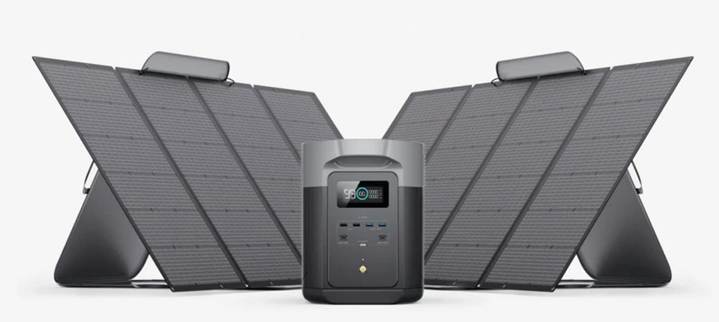What to Know Before Buying a Portable Power Station for Emergencies
Portable power stations have surged in popularity due to their versatility and convenience in emergency situations. These devices provide reliable power sources when traditional power is unavailable or inadequate. Whether you’re dealing with a sudden blackout, preparing for a camping trip, or facing unexpected natural disasters, understanding portable power stations can be crucial for ensuring safety and preparedness. This guide explores essential factors to consider before making a purchase, guaranteeing you select the right unit to meet your needs when you need it most.
What is a Portable Power Station and How Does It Work?
Definition of Portable Power Stations
A portable power station is a compact, transportable unit that provides electrical power without relying on the grid. They are essentially rechargeable battery systems equipped with various outputs, such as AC, DC, and USB ports, allowing users to charge or power multiple devices simultaneously. Unlike generators, portable power stations are quieter and emit no fumes, making them ideal for both indoor and outdoor use.
Key Components of a Portable Power Station
A typical portable power station consists of several essential components that work together to deliver electricity. The main component is the rechargeable battery, which stores energy until it’s needed. AC inverters convert stored DC battery power to AC power, enabling the device to power standard household appliances. The unit may also include multiple output ports for charging electronics, and a charge controller to efficiently manage battery charging. Advanced models often feature LCD screens displaying battery status and output usage, providing users with real-time information.
Key Features to Consider Before Buying a Portable Power Station
Battery Capacity and Power Output
A critical feature is the battery capacity, usually measured in watt-hours (Wh), indicating how much electricity it can deliver before needing recharging. Higher capacities allow for longer usage times or powering more devices. Power output, measured in watts, determines what devices can be powered; check watt requirements of your appliances to ensure compatibility and effectiveness.
Charging Time and Solar Charging Compatibility
Charging time affects the convenience and readiness of your power station in emergencies. A faster charging option means less downtime during urgent situations. Solar charging compatibility offers added flexibility, allowing users to harness solar energy, which can be vital during prolonged outages. Look for models supporting efficient solar panel connections and those with built-in solar MPPT controllers.
Portability and Size
Consideration of portability and size is vital. You need a unit easily transportable, especially when mobility is key to emergency preparedness. Smaller units tend to be lighter, but may have less capacity or fewer features, so look for a balance between portability and functionality, ensuring ease of transport without sacrificing critical performance.
Best Uses for Portable Power Stations During Emergencies
Home Backup Power
Portable power stations offer a reliable backup power solution during electricity outages, helping maintain household functionality. They can operate essential appliances such as refrigerators, medical devices, lighting, and communication tools. By ensuring continued access to these critical systems, they support safety, comfort, and connectivity until regular power is restored.
Outdoor Activities and Camping
These power stations are ideal for outdoor enthusiasts needing reliable energy while camping. They charge devices, power small appliances, and offer a quiet, eco-friendly alternative to gas generators. Compact and portable, they enhance comfort and convenience, ensuring an uninterrupted power supply that supports a more enjoyable and sustainable outdoor experience.
Emergency and Disaster Situations
In disasters like hurricanes, floods, or wildfires, portable power stations play a vital role by providing reliable electricity when traditional sources fail. They support emergency communication systems, power essential medical equipment, and charge phones or radios. Their grid-independent operation makes them indispensable for disaster response and survival preparedness in any emergency kit.

Tips for Maintaining and Extending the Life of Your Portable Power Station
Regular Battery Health Checks
Regularly conducting battery health checks is essential to maintaining the long-term reliability of your power station. Monitor charge cycles, track voltage levels, and examine the unit for signs of wear or physical damage. These proactive inspections help identify potential issues early, ensuring optimal performance and extending the overall lifespan of the device.
Proper Storage Conditions
To ensure the longevity of your power station, store it in a cool, dry location away from direct sunlight, excessive heat, or damp environments. These conditions help prevent corrosion, moisture buildup, and thermal damage, which can degrade sensitive electronic components and reduce the overall battery life and performance over time.
Prolonging Battery Life During Storage
When storing a battery for extended periods, it’s best to keep it at a partial charge—around 40% to 60%—instead of fully charged or completely drained. This helps reduce stress on the battery’s chemistry. Additionally, occasional recharging during storage helps maintain its health, minimizing degradation and extending its overall lifespan.
Conclusion
Choosing the right portable power station involves evaluating key features like battery capacity, charging options, and portability while recognizing its utility in various emergency scenarios. Proper maintenance enhances its longevity, ensuring it remains a reliable power source when unforeseen situations arise. By understanding these factors, you’ll be better equipped to select the most suitable portable power station, securing peace of mind in times when it matters most.



